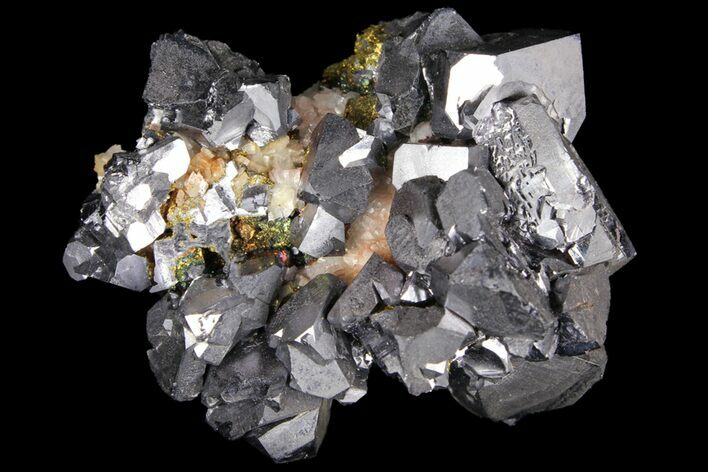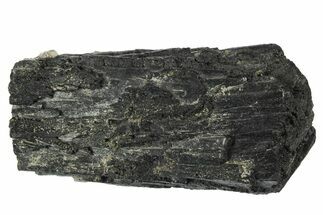This Specimen has been sold.
1.7" Cubic Galena, Dolomite and Chalcopyrite Association - China
This is a small, pristine specimen that displays an association of cubic galena, chalcopyrite and dolomite crystals. The largest galena cube is .51" wide. This mineral association was collected from China.
Galena is a lead-based mineral and the primary ore of lead, and has been used for its lead content for thousands of years. Galena typically displays a gray metallic luster and forms cubes or octahedral crystals. The chemical composition of galena is PbS.
While galena will not pose a health hazard by sitting on the shelf or even from casual handling, we suggest washing hands following handling due to the mineral's lead content.
While galena will not pose a health hazard by sitting on the shelf or even from casual handling, we suggest washing hands following handling due to the mineral's lead content.
Dolomite is an anhydrous carbonate mineral composed of calcium magnesium carbonate (CaMg(CO3)2).
The mineral dolomite crystallizes in the trigonal-rhombohedral system. It forms white, tan, gray, or pink crystals. Dolomite is a double carbonate, having an alternating structural arrangement of calcium and magnesium ions. It does not rapidly dissolve in dilute hydrochloric acid as calcite does. Crystal twinning is common.
Dolomite was first described by Carl Linnaeus in 1768, and in 1791 it was described as a rock by the French naturalist and geologist Déodat Gratet de Dolomieu. He first recognized the material in buildings of the old city of Rome, and later as samples collected in the mountains known as the Dolomite Alps of northern Italy.
The mineral dolomite crystallizes in the trigonal-rhombohedral system. It forms white, tan, gray, or pink crystals. Dolomite is a double carbonate, having an alternating structural arrangement of calcium and magnesium ions. It does not rapidly dissolve in dilute hydrochloric acid as calcite does. Crystal twinning is common.
Dolomite was first described by Carl Linnaeus in 1768, and in 1791 it was described as a rock by the French naturalist and geologist Déodat Gratet de Dolomieu. He first recognized the material in buildings of the old city of Rome, and later as samples collected in the mountains known as the Dolomite Alps of northern Italy.
What Is Chalcopyrite?
Chalcopyrite is a brass-yellow colored mineral and an important copper ore. When weathered, chalcopyrite loses its metallic luster, turning a gray-green color. When exposed to acids, the tarnish can develop a red, blue, or purple iridescence: this acid-treated material is often sold under the name peacock ore.
Chalcopyrite is a brass-yellow colored mineral and an important copper ore. When weathered, chalcopyrite loses its metallic luster, turning a gray-green color. When exposed to acids, the tarnish can develop a red, blue, or purple iridescence: this acid-treated material is often sold under the name peacock ore.
SPECIES
Galena, Chalcopyrite & Dolomite
LOCATION
China
SIZE
1.7" long, 1.3" wide
CATEGORY
ITEM
#94636
 Reviews
Reviews













